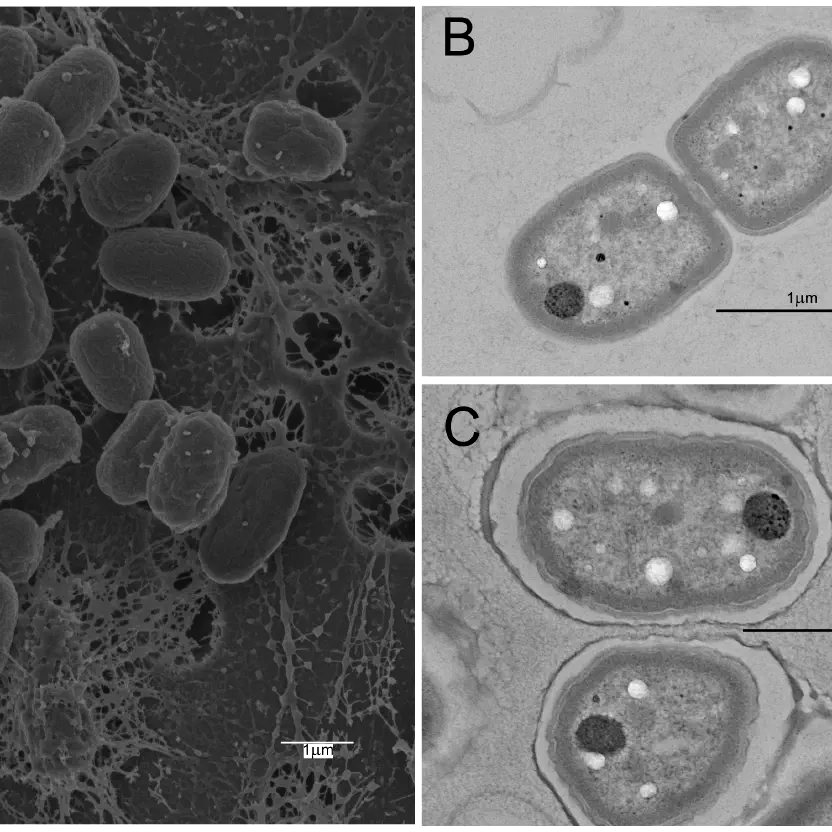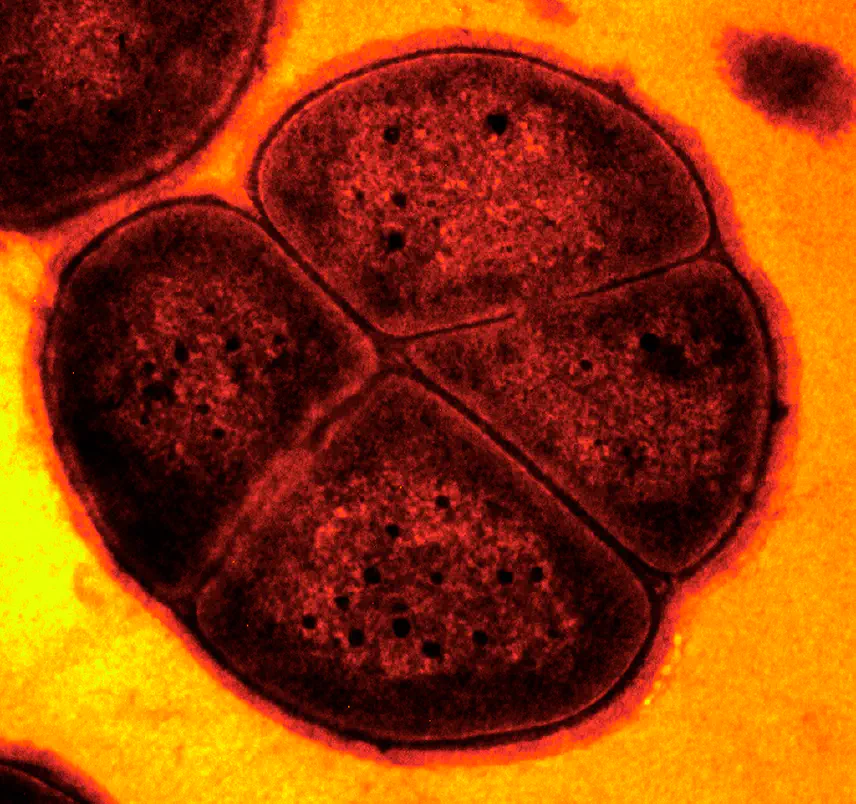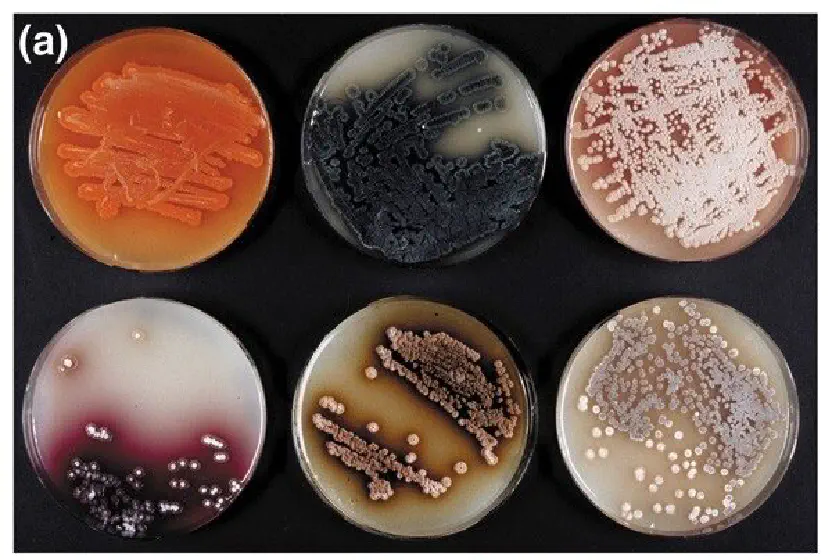
 07.25.2021
07.25.2021Gloeobacter violaceus
Gloeobacter violaceus is an atypical bacteria that lives on rocks and requires sunlight for growth.

Deinococcus radiodurans can grow on the inside of nuclear reactors.
It is an extremophilic organism, meaning it can live in extremely challenging environments — its name literally means “strange berry that withstands radiation.”
This bacterium can withstand a thousand times more radiation than a person can due to its super-efficient DNA repair mechanism! Radiation usually kills cells by causing double-stranded breaks in DNA. Following exposure to radiation, D. radiodurans’ regulatory mechanisms prevent the replication of DNA, proteins then bind to the DNA breaks, protecting them from further degradation, various proteins and a polymerase then come in and repair the broken strand. It carries between 4-10 copies of its genome (bacteria usually carry just one)
D. radiodurans lives just about anywhere, from elephant feces to dry valleys of the Antarctic. It was discovered in 1956 from spoiled meat in an experiment to determine whether canned food can be sterilized by high doses of gamma radiation. Due to its resistance, it is used for the cleanup of radioactive waste sites and has been considered as a candidate for studying living organisms in space.
D. radiodurans is a spherical bacterium that forms a tetrad – four cells normally stick together. They form smooth, pinkish reddish colonies and are relatively easy to grow in the lab.

 07.25.2021
07.25.2021Gloeobacter violaceus is an atypical bacteria that lives on rocks and requires sunlight for growth.

 07.25.2021
07.25.2021Streptomyces coelicolor belongs to the Streptomyces genus of bacteria. Not only do they produce about two-thirds of clinical antibiotics, Streptomyces are curious bacteria in terms of their life cycles and morphological characteristics.

 10.13.2022
10.13.2022Prochlorococcus marinus is the most abundant photosynthetic organism in the ocean, and most likely on the planet!